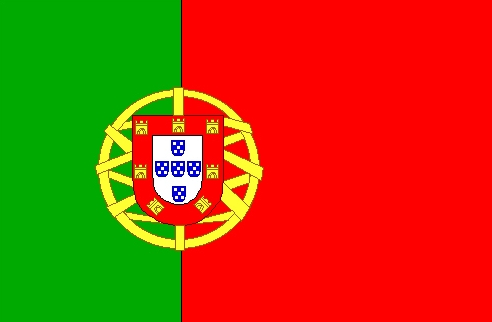Portugal's Flag
by Frederic "Jim" Silva
In 1143 Portugal's flag was a simple blue cross on a silver background, the heraldic banner of Portugal's first King, Afonso Henrlques.
By 1248 an established Kingdom under his great grandson Afonso III had added an attractive red border to this standard and decorated this border with 16 golden castles which represented his new queen's royal Castilian lineage.
By 1485 the 16 castles were reduced to today's seven and the 5 blue shields at the center were each decorated with 5 white dots.
Most of these symbolic emblems, plus a few others, are incorporated in today's flag which represents a proud republican nation and people. Shields within a shield, within a shield.
The five blue shields at the very centre represent five Moorish kings that were defeated in battle at Ourique by Portugal's first King Afonso Henriques.
The white central shield is the personal armor of this same King and was said to have been given to him in a vision of the crucified Christ.
The five white dots inside the five blue shields represent the 30 pieces of silver Judas was paid to betray Jesus.
The seven golden castles on a red background now represented Moorish strongholds which were vanquished in the battles for independence.
The yellow orb surrounding the shields tells of the world that the Portuguese navigators first discovered.
The green of the flag represents hope for the future.
The red represents Portuguese courage and the blood of her people that was shed in combat.
